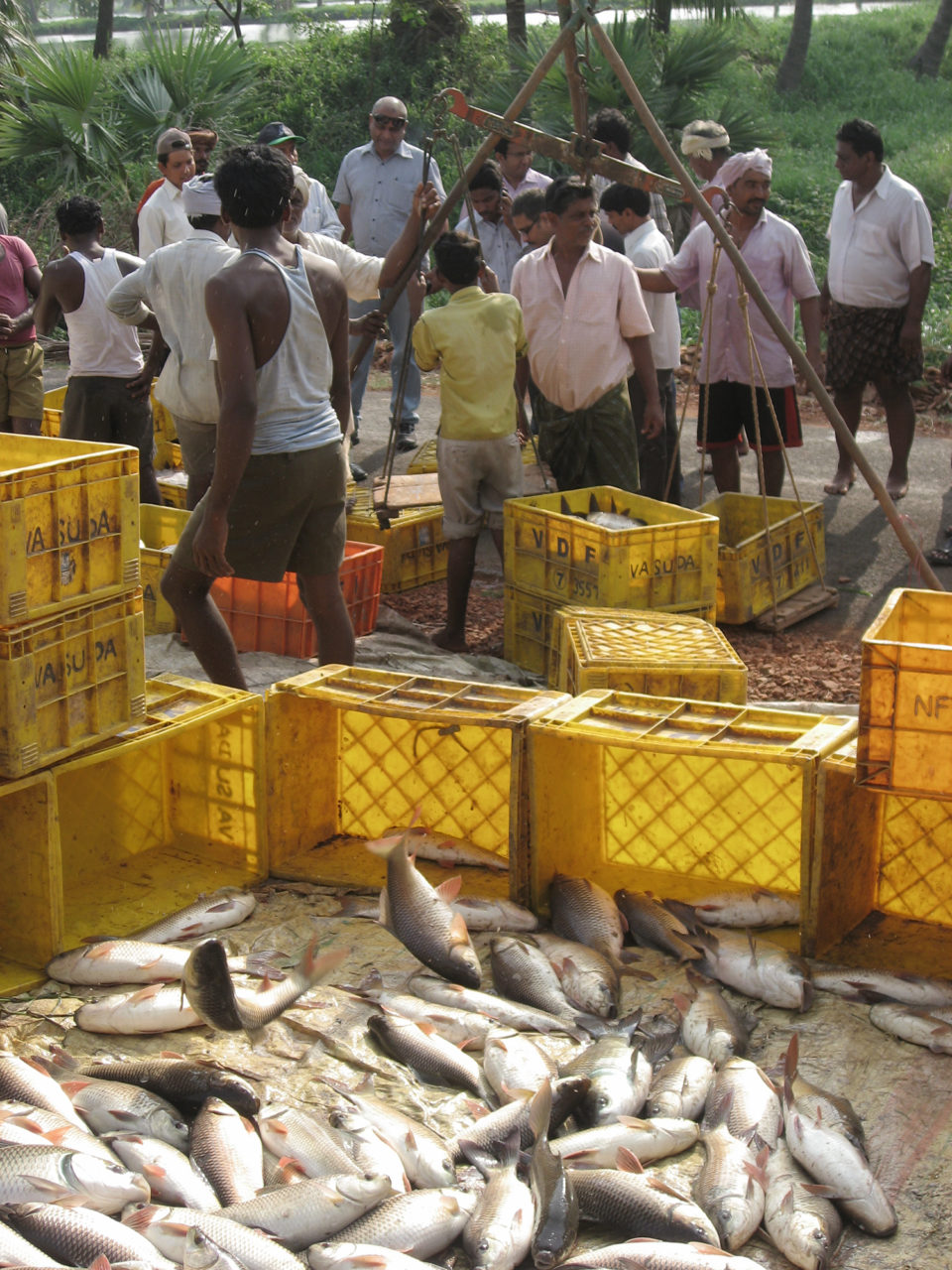Report on African Freshwater Fisheries and the Sustainable Development Goals
Executive Summary
This report examines the state of Africa’s freshwater fisheries, highlighting the growing tension between the decline of wild fish populations and the expansion of aquaculture. While aquaculture production is increasing, its development presents significant challenges to achieving multiple Sustainable Development Goals (SDGs), particularly those related to poverty, hunger, health, and environmental sustainability. A strategic, continent-wide approach is required to balance aquaculture growth with the urgent need to protect and restore freshwater ecosystems, thereby ensuring long-term food security and ecological stability in alignment with the 2030 Agenda for Sustainable Development.
The Critical State of Wild Freshwater Fisheries and SDG Implications
Wild freshwater fish species are fundamental to food security and ecological balance across Africa. Their severe decline, driven by habitat loss, overfishing, and inadequate governance, directly threatens the achievement of several SDGs.
- SDG 2 (Zero Hunger): The loss of wild fish stocks jeopardizes a primary source of protein and essential micronutrients for millions, undermining food security.
- SDG 14 (Life Below Water) & SDG 15 (Life on Land): The decline represents a significant loss of biodiversity and disrupts the health of freshwater ecosystems, which are vital life support systems.
- SDG 1 (No Poverty) & SDG 8 (Decent Work and Economic Growth): The livelihoods of communities dependent on inland fisheries are at risk.
The rise of aquaculture is often presented as a solution. In 2022, global aquaculture production surpassed wild capture fisheries for the first time, with Africa producing over 2.1 million tonnes of farmed freshwater species. However, this growth is not a simple replacement and poses its own set of challenges to sustainable development.
Aquaculture Expansion: A Challenge to Sustainable Development
The rapid growth of aquaculture in Africa, if not managed sustainably, can create significant socio-economic and environmental problems, potentially hindering progress towards key SDGs.
Socio-Economic and Nutritional Risks
The transition from diverse wild-caught fish to farmed species can have negative consequences for vulnerable populations.
- Impact on SDG 1 (No Poverty) & SDG 2 (Zero Hunger): Farmed fish can be less affordable and accessible to low-income households compared to wild-caught fish.
- Impact on SDG 3 (Good Health and Well-being): Replacing a nutritionally diverse wild catch with a few farmed species is linked to a reduction in micronutrient intake and an increased risk of malnutrition.
Environmental Degradation and Ecological Imbalance
Unsustainable aquaculture practices pose a direct threat to the very ecosystems upon which both wild fisheries and long-term aquaculture productivity depend.
- Impact on SDG 6 (Clean Water and Sanitation) & SDG 15 (Life on Land): Poorly managed aquaculture can lead to water pollution, destruction of critical habitats like wetlands, and the degradation of freshwater ecosystems.
- Impact on SDG 15 (Life on Land): The introduction of non-native species for aquaculture can lead to the spread of invasive species, threatening native biodiversity.
- Impact on SDG 12 (Responsible Consumption and Production): The long-term viability of the aquaculture sector is undermined by practices that degrade the wild fish populations and natural resources it relies upon.
A Proposed Framework for Recovery and SDG Alignment
To address these challenges, a two-pronged strategy involving global initiatives and a continent-wide recovery plan is recommended. This approach aims to restore ecosystem health while guiding the aquaculture sector towards sustainability, creating synergies across multiple SDGs.
The Freshwater Challenge Initiative
African nations are encouraged to join the Freshwater Challenge, a global initiative that directly supports several SDGs through ambitious restoration targets.
- Objective: Restore 300,000 km of rivers and 350 million hectares of wetlands by 2030.
- SDG Alignment: This initiative is a direct contribution to SDG 6, SDG 14, and SDG 15. With 20 African nations already participating, it exemplifies SDG 17 (Partnerships for the Goals) by uniting countries, funders, and investors.
Emergency Recovery Plan for Freshwater Biodiversity
A comprehensive, science-based Emergency Recovery Plan is proposed to provide a tailored framework for Africa. Its pillars are designed to create benefits for both natural ecosystems and the aquaculture sector.
- Improve Water Quality: Reducing pollutants from agriculture and deforestation directly benefits aquaculture by providing cleaner water, aligning with SDG 6.
- Manage Invasive Species: A target to reduce the introduction of invasive non-native species by 50% impacts the aquaculture sector. This measure, crucial for SDG 15, would necessitate:
- Stricter controls on the selection of aquaculture species.
- Improved biosecurity protocols.
- A shift towards ecosystem-based and integrated aquaculture models, encouraging innovation in line with SDG 9 (Industry, Innovation and Infrastructure).
Analysis of Sustainable Development Goals (SDGs) in the Article
1. Which SDGs are addressed or connected to the issues highlighted in the article?
- SDG 2: Zero Hunger: The article directly addresses this goal by discussing “food & nutrition security” and the risk of “malnutrition.” It highlights the importance of both wild and farmed fish as food sources and notes that replacing diverse wild fish with a few farmed species can reduce micronutrient content, impacting the quality of food available to poor families.
- SDG 6: Clean Water and Sanitation: This goal is central to the article’s theme. The text focuses on the health of “Africa’s freshwater ecosystems,” the need to restore rivers and wetlands, and the importance of “improving water quality through the reduction of pollutants” from sources like agriculture and aquaculture.
- SDG 14: Life Below Water: While often focused on marine environments, this goal’s principles are highly relevant. The article discusses the threats to aquatic biodiversity in freshwater systems, including “overfishing” of wild species and the need to protect these ecosystems for their “ecological stability.”
- SDG 15: Life on Land: This goal is connected through its focus on protecting biodiversity and ecosystems. The article discusses the threats to “wild freshwater species” from “habitat loss” and the spread of “invasive non-native species,” which are key concerns of SDG 15. The call to restore wetlands and protect freshwater biodiversity directly supports this goal.
2. What specific targets under those SDGs can be identified based on the article’s content?
- Target 2.1: By 2030, end hunger and ensure access by all people, in particular the poor and people in vulnerable situations, including infants, to safe, nutritious and sufficient food all year round. The article relates to this by stating that for “poor families, aquaculture fish can be less affordable” and that replacing wild fisheries with farmed fish could “increase the risk of malnutrition.”
- Target 6.3: By 2030, improve water quality by reducing pollution. The article explicitly mentions this by referencing a plan to “improving water quality through the reduction of pollutants, including sediment runoff from agriculture and deforested land,” and notes that poorly managed aquaculture can cause “pollution.”
- Target 6.6: By 2020, protect and restore water-related ecosystems, including mountains, forests, wetlands, rivers, aquifers and lakes. This is directly addressed by the “Freshwater Challenge,” a global initiative mentioned in the article that aims “to restore 300,000 km of rivers and 350 million hectares of wetlands by 2030.”
- Target 14.4: By 2020, effectively regulate harvesting and end overfishing. The article identifies “overfishing” as a “severe threat” to wild freshwater species, directly aligning with the objective of this target.
- Target 15.5: Take urgent and significant action to reduce the degradation of natural habitats, halt the loss of biodiversity and, by 2020, protect and prevent the extinction of threatened species. The article’s core message about wild freshwater species being “under severe threat from habitat loss” and the call for an “Emergency Recovery Plan for Freshwater Biodiversity” connect directly to this target.
- Target 15.8: By 2020, introduce measures to prevent the introduction and substantially reduce the impact of invasive alien species on land and water ecosystems. The article explicitly mentions a proposed target that “the rate of introduction and establishment of invasive non-native species should be reduced by 50 percent,” linking this threat to the aquaculture sector.
3. Are there any indicators mentioned or implied in the article that can be used to measure progress towards the identified targets?
-
Indicator for Target 6.6: The article provides explicit quantitative indicators for restoration efforts through the “Freshwater Challenge”:
- Kilometers of rivers restored (Target: 300,000 km).
- Hectares of wetlands restored (Target: 350 million hectares).
-
Indicator for Target 15.8: A specific, measurable indicator is proposed in the article:
- The rate of introduction and establishment of invasive non-native species (Target: reduction by 50 percent).
-
Implied Indicator for Target 2.1: The article implies the need to measure the nutritional quality of food sources:
- Micronutrient content of fish consumed by local populations.
-
Implied Indicator for Target 6.3: Progress can be measured by monitoring water pollution levels:
- Levels of pollutants and sediment runoff in freshwater ecosystems.
-
Implied Indicator for Target 14.4: The article implies tracking fish production and population health:
- Volume of wild capture fisheries (in tonnes) versus aquaculture production.
- Population status of wild freshwater fish species.
4. Summary Table of SDGs, Targets, and Indicators
| SDGs | Targets | Indicators |
|---|---|---|
| SDG 2: Zero Hunger | 2.1: End hunger and ensure access to safe, nutritious, and sufficient food. | Micronutrient content of available fish; Affordability of fish for poor families. |
| SDG 6: Clean Water and Sanitation | 6.3: Improve water quality by reducing pollution. | Levels of pollutants and sediment runoff in freshwater. |
| 6.6: Protect and restore water-related ecosystems. | Kilometers of rivers restored (Target: 300,000 km); Hectares of wetlands restored (Target: 350 million ha). | |
| SDG 14: Life Below Water | 14.4: End overfishing. | Volume of wild capture fisheries; Population status of wild freshwater species. |
| SDG 15: Life on Land | 15.5: Halt biodiversity loss. | Rate of decline of wild freshwater species; Extent of habitat loss. |
| 15.8: Reduce the impact of invasive alien species. | Rate of introduction and establishment of invasive non-native species (Target: reduction by 50%). |
Source: thefishsite.com







